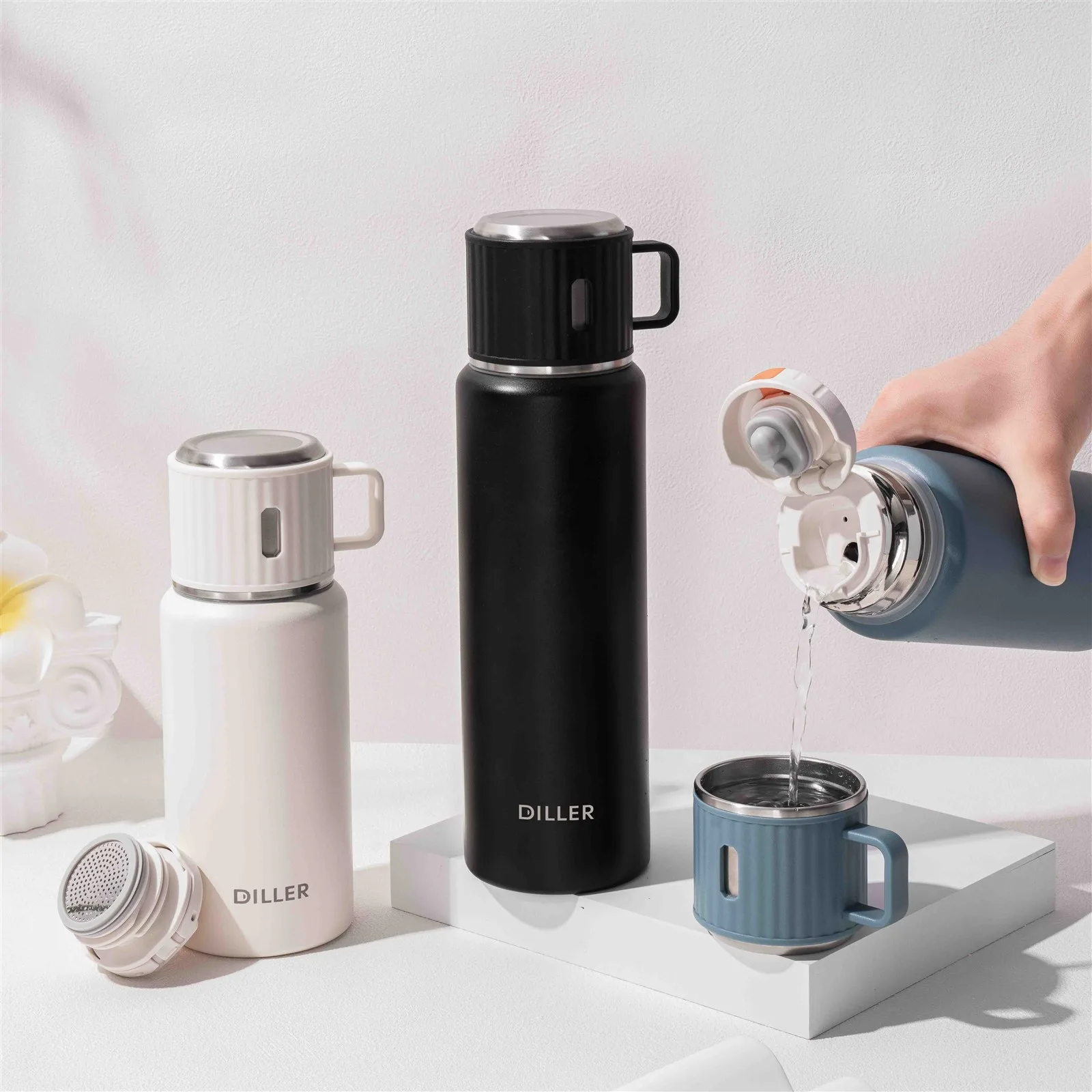Detailed description of 304 stainless steel and 316 stainless steel insulation cup materials
Stainless steel is one of the most common materials for making insulation cups, with characteristics such as durability, good insulation effect, and corrosion resistance.
The materials of stainless steel insulation cups can be divided into the following types:
1. Food grade stainless steel: Food grade stainless steel is one of the most common materials for making stainless steel insulation cups, with characteristics such as corrosion resistance, safety and hygiene. Common food grade stainless steels include 304 stainless steel, 316 stainless steel, etc.
2. Medical stainless steel: Medical stainless steel is a high standard stainless steel material with higher corrosion resistance and strength, commonly used in the production of high-end insulation cups. Common medical stainless steels include 316L stainless steel, etc.
3. Space aluminum material: Space aluminum is a lightweight, durable, and low-cost material commonly used to make lightweight, portable stainless steel insulated cups.
4. Stainless steel material: Stainless steel is a material that lies between stainless steel and iron, with good corrosion resistance and low price. It is commonly used to make low-end stainless steel insulation cups.
When choosing stainless steel insulated cups, it is necessary to choose the appropriate material according to your own needs and budget. At the same time, it is necessary to pay attention to choosing legitimate brands and manufacturers to avoid selecting inferior or harmful materials.
In addition, the material and structure of the inner and outer liner of the stainless steel insulation cup can also affect its performance and service life. Generally speaking, the inner liner of a stainless steel insulated cup is usually made of food grade stainless steel, while the outer liner can be made of different thicknesses of food grade stainless steel or food grade plastic. In addition, the insulation effect and sealing performance of stainless steel insulation cups also need to be considered. Generally speaking, the insulation effect of an insulated cup depends on the thickness of the cup wall and the manufacturing process of the vacuum layer, while the sealing performance depends on the design and manufacturing process of the cup lid and sealing ring.
What are the differences in the materials of 304 stainless steel and 316 stainless steel insulation cups?
304 stainless steel and 316 stainless steel are two commonly used insulation cup materials, and they have some differences in the following aspects:
1. Composition: The composition of 304 stainless steel and 316 stainless steel is slightly different. 304 stainless steel contains about 9% nickel and 18% chromium, while 316 stainless steel contains about 12% nickel and 16% chromium. Nickel can improve high-temperature durability, mechanical properties, and oxidation resistance in metal materials, so the high-temperature resistance of 316 stainless steel is better than that of 304 stainless steel.
2. Corrosion resistance: Due to the molybdenum element in 316 stainless steel, the corrosion resistance of 316 stainless steel is stronger than that of 304 stainless steel. Therefore, 316 stainless steel is commonly used in the production of surgical equipment and other products that require higher corrosion resistance.
3. Price: Due to the higher cost of 316 stainless steel compared to 304 stainless steel, the price of 316 stainless steel insulated cups is usually higher than that of 304 stainless steel insulated cups.
4. Scope of application: Because 316 stainless steel has better corrosion resistance and high temperature resistance, it is often used to make food industry, chemical industry and other equipment that need to contact Corrosive substance such as strong acid and alkali. 304 stainless steel is more commonly used in daily necessities, such as insulated cups and tableware.
When selecting insulation cups, it is necessary to choose the appropriate material based on one’s own needs and budget. Generally speaking, 304 stainless steel is an economical choice suitable for most daily uses. If higher corrosion resistance and high temperature resistance are required, a 316 stainless steel insulation cup can be chosen. At the same time, it is necessary to pay attention to choosing legitimate brands and manufacturers to avoid selecting inferior or harmful materials.

